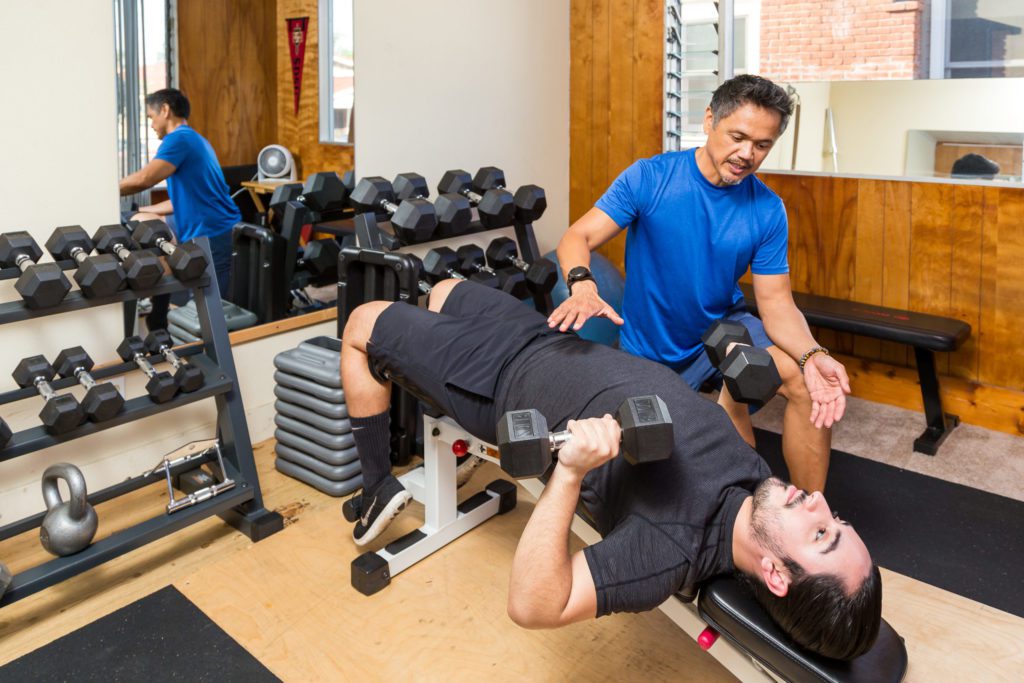Fundamental of the Month – May
(This blog post was originally published on May 25, 2021 at Level One Training and Fitness. The content has been updated.)
You’ll recall last time we talked about how the Centers for Disease Control and Prevention along with the American College of Sports Medicine collaborated to create a list of 4 fundamental activities for US adults. These activities need to be completed weekly and can result in better health. Last post we talked about cardio and this one is on strength or resistance training. The minimum recommendation here is for at least two sessions weekly, working all major muscle groups with anywhere from 2-4 sets with between 8-12 repetitions per set, dependent on your goals.
Why is strength important?

We often take it for granted, but our physical strength is required each and every time we move a body part. Regardless of whether you’re pointing and clicking a mouse, typing on a keyboard, or running after the kids, each of those actions requires a certain amount of strength. Walking – requires strength. Cooking in the kitchen – requires strength. Going through each of your daily routines – requires strength. Big or small, each move we make requires a certain measure of strength in your muscles.
When we’re younger it may seem like we can tackle most everything, but as we age we tend to slow down a bit and things don’t seem as easy as they used to be. As we head into our later years, our available strength becomes more important because it allows us to continue functioning independently and confidently in our everyday lives. Establishing a resistance training habit in our earlier years sets us up for optimal strength as we grow older and helps protect against sarcopenia, a debilitating muscle condition often found in older adults which results in the loss of muscle mass.
Strength: Gym Membership Not Required
There’s nothing wrong with gyms; there’s a time and a place for them. The good news is, if you aren’t a big fan of gyms, you can typically accomplish your resistance training requirements with minimal equipment on a minimal budget. For example, you can do a LOT of exercises utilizing only your body weight. If you purchase a set of resistance bands, you’ll still use your bodyweight, but you can expand the exercises available to you. Not only that, but you’ll also be working both phases of muscle contraction (concentric and eccentric) instead of just one.
Another option is to add a suspension trainer into the mix. Even though you’re still using your bodyweight as before, you’re working your muscles quite differently by using different principles including when your body is suspended, at what angle your body is aligned, and how stable your body is positioned on the floor/earth. The great thing about the suspension trainer is that it’s so versatile, you can accomplish almost all 4 of the recommendations from the ACSM and CDC!
However, if you prefer the gym for its convenience, amenities, classes, and more, then learning how to use gym equipment (Nautilus, Cybex, Hoist, etc.) and free weights (dumbbells, kettlebells, barbells, etc.) will come in handy. In fact, you may eventually decide to buy a few select pieces of equipment such as dumbbells, kettlebells, a medicine ball, a Swiss ball, or more. Take some time to orient yourself with some of the available equipment, pick up some pointers on their usage, and eventually, you may have no need/want for a gym because you’ve got a small setup at home!

Strength Recommendations
The bare minimum number of resistance training sessions weekly is 2; if you can get to 3, you’re doing great. Your exercises/routine should conform to your goals, i.e. just because Sally your coworker is able to do reverse lunges while carrying a pair of 50 pound dumbbells, doesn’t mean you need to as well (but, it also doesn’t mean that you CAN’T do it). Additionally, your routine should focus on all of the major muscles groups (chest, back, shoulders, arms, abdominals, hips, legs) with between 2 and 4 sets for each. Again, correlate your exercises with your goals (better overall strength, general fitness, rehab, etc.)
Summary
No matter how you slice it, 2-3 sessions of strength/resistance training weekly should be your goal with 2-4 sets for each of your body’s major muscles groups and 8-12 repetitions per set, dependent on your goals. It’s a great habit to get into, especially the younger you are, because it helps maintain or improve your strength and is easily achieved with little to no equipment and/or space. As we get older this will become increasingly important. And as mentioned previously, no gym required!
Let us know how you accomplish your resistance/strength training in the comments below. If you’d like some pointers, check out our virtual training program or contact us for more information.


